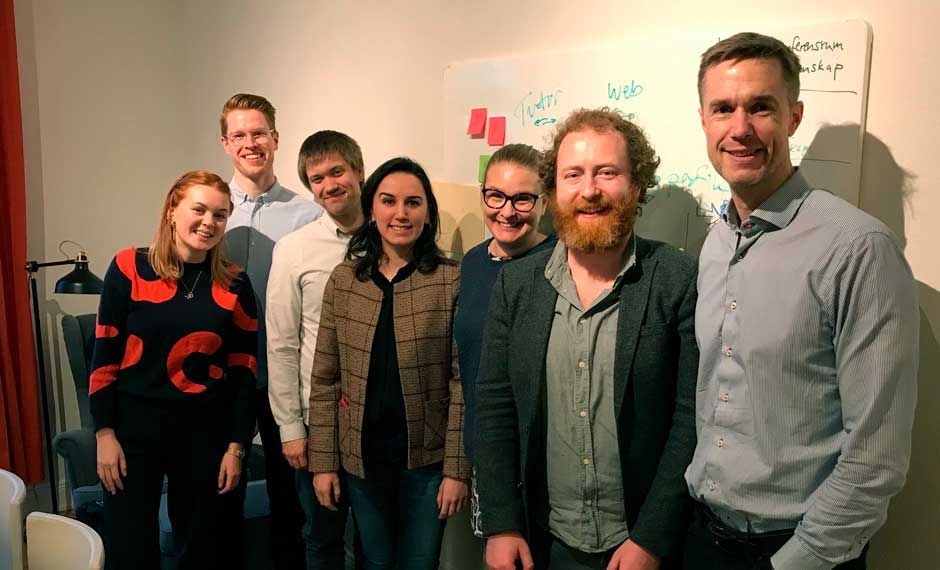Each year, KTH hosts the Energy Dialogue which aims to bring together researchers, industry and policy makers to address sustainability in urban energy systems. During the dialogue last year there was a poster competition. The winners were awarded Impact Communication Training at VA.

Yasemin Duygu Yücel, Ross Harnden and Henrik Grimler all won prizes in the KTH Energy Platform poster competition 2019. They arrived at VA offices in February for a full day of communication training with several of our experts. The training workshop was designed to help the talented researchers discover new ways to communicate their work and to engage different audiences.
The workshop began by talking about communication strategy. We discussed fundamental concepts in communication, as well as practical methods for defining a target audience and carefully structuring a communication strategy to have an impact. After a short fika, we explored several specific skills that can take science communication to the next level.
Pitching skills for Sunday dinner
Firstly we explored how to pitch scientific research. Pitching is normally associated with the business world but there are lots of parallels with research. The ability to quickly and succinctly grab someone’s attention and excite them about a topic can help researchers at interviews, poster presentations and especially when giving talks. As one participant pointed out, it even helps when talking to friends and family about your research, which can often be overwhelmingly complex for the Sunday dinner table.
We then discussed writing, more specifically, how to write in a popular and journalistic style. With so much competition for attention, especially online, the ability to craft an interesting and informative article that keeps people moving down the page is an important skill. It is especially important in academia where most people can write very well using scientific language that will attract a scientific audience but have little experience writing for the general public.
Video camera in your pocket
Thirdly we discussed video production. Video is an increasingly important medium online, especially for science. The increase in video views has corresponded with a decrease in the cost and difficulty to produce videos, mainly thanks to high quality cameras in mobile phones and a suite of simple video editing apps. We gave examples of good videos and best practices for getting high quality images and sound from the camera in everyone’s pocket.
The day rounded off with a session on how to spread and share our message, using all of the new tools explored throughout the day. We discussed the positive and negative aspects with many different communication channels, from social media to giving seminars. This is key as without a good plan for sharing your work, it will be hard to deliver a strong message to your target audience.
The Impact Communication Training was a lot of fun and a valuable learning experience for us at VA, as well as for the KTH attendees.
If scicomm training would be interesting to you or your research group, welcome to send us an email at [email protected].
